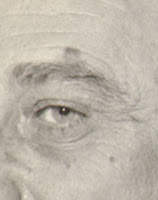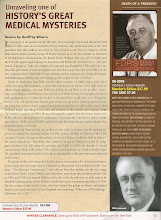

George T. Pack was one of the top cancer surgeons of the first half of the twentieth century. Among other important accomplishments, he founded the Gastric and Mixed Tumor Service where he was "Mr. Melanoma" at Memorial Sloane Kettering Cancer Center and treated countless international dignitaries, most famously Eva Peron and, surreptiously, Franklin Roosevelt.
Ruben Oropeza from 1963 to Pack's death was Pack's closest protegee and confidante. After Pack's stroke and heart attack, Oropeza performed all of his surgery with Pack scrubbed in at his side. He was totally devoted to Pack and managed all his medical affairs. Pack confided in him as he did with only one other individual, Dr. Irving Ariel. Ariel was sworn to secrecy about many of the details of what Pack told him. Oropeza is alive and well at age 81 and living in Texas and Mexico.
Dr. Oropeza has related information to me that is reliable and authoritarian. His recollections about Pack are quite analagous and equally as reliable as those of Margaret "Daisy" Suckley were to FDR.
As with Daisy, the vast balance of the material is an incredibly valuable and unique archive. I will be posting excerpts of his notes and hope to incorporate the material into a journal article.
The photographs above were among the archive I have so far received. With respect to FDR, there were two operations he personally performed on the melanoma, one local and the other (with Frank Lahey in Boston) an abdominal "open and close" procedure. The dates are still unclear.
Ruben Oropeza is the last living link to unlocking the truth of FDR. I will be posting excerpts from the material and hope to incorporate it into a more comprehensive scientific paper. I am incredibly fortunate to have been able to contact him.
Happy New Year to all!
SL








